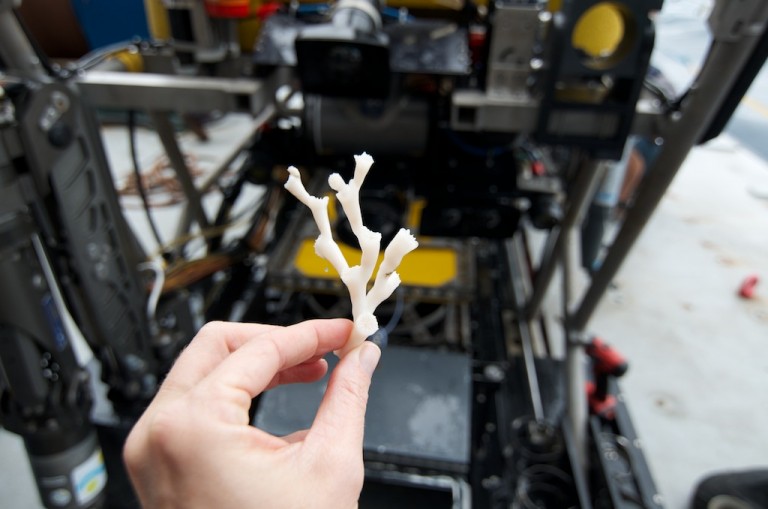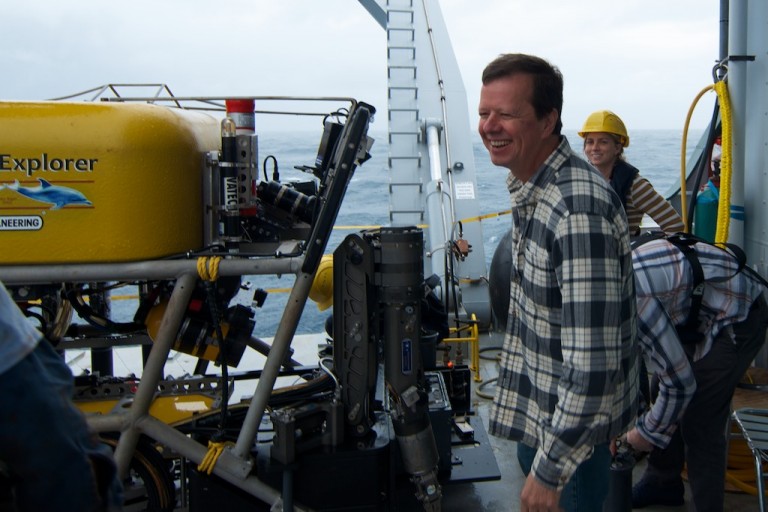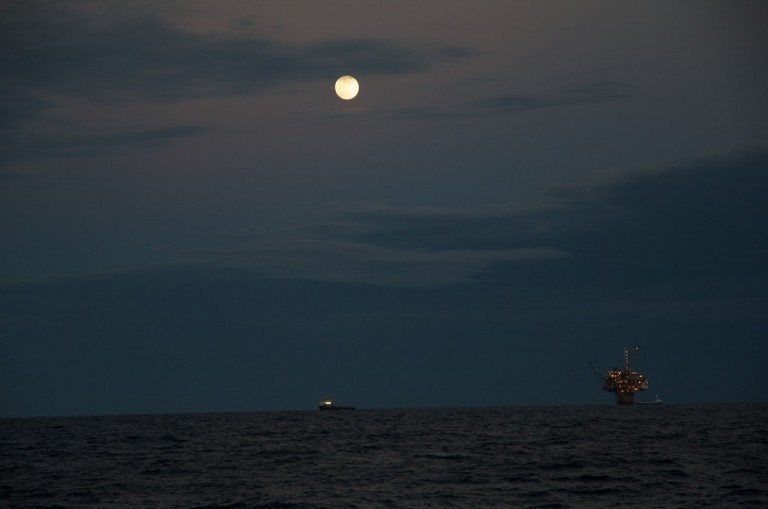The research operations ended today with two final dives of ROV Global Explorer MK3. The objective was to collect live specimens of three different coral species for transport back to university laboratories. The targeted location was a shallow water site, 500 meters depth, where scientists had worked previously during this expedition. Morning began with a vibrant red sunrise that hinted at changing weather on the way.

Graduate student Dannise Ruiz coordinated the first ROV dive for collections of the black coralLeiopathes. Dannise has been doing controlled exposure experiments with this species during the past week of the cruise. Her experiments are aimed at understanding the effects of oil and dispersant—the substance that was used to break-up effluent from the Deepwater Horizon disaster—on the health of deep-sea coral communities. The specimens collected today will be shipped to Penn State where Dannise will continue additional laboratory studies with her advisor, Dr. Iliana Baums.

By late morning and the end of the first dive, a storm squall had developed, bringing strong gusts of winds and rain that delayed the redeployment of Global Explorer. The researchers waited patiently for the storm to clear in hopes that there could be just one more dive. Everyone used the time to begin packing and cleaning lab spaces in preparation for the return to port. Fortunately the squall finally passed and Captain Heiko Volz and ROV Pilot Toshi Mikagawa gave the ok to dive.
The last dive was important for the group from Temple University. Graduate student Danielle Young and undergrad Conall McNicholl directed this final dive to collect live specimens of Lophelia andCallogorgia corals for their advisor Eric Cordes who is also studying the effects of oil. The dive began at an area with colonies of Lophelia. The ROV pilots maneuvered the vehicle around rock outcroppings to locate the corals and delicately sample pieces that were placed in collection quivers and the biobox drawer. Unfortunately the dive ran out of time before the ROV could transit to an area with aggregations of Callogorgia and none of these species were collected.

Back on deck, the coral specimens were quickly unloaded from the ROV into buckets of chilled seawater that had been prepared beforehand. After researchers transferred the samples, the buckets were returned to the cold van laboratory to keep the water temperature around 7°C. The coral groups stayed busy to the end of the day as they completed the last experimental time point and prepared their samples for shipment home. The labs and working areas bustled with activity as everyone packed up gear and samples, and made sure that copies of data were shared.
As the ship began transiting back to port in Pascagoula, all hands gathered for a farewell BBQ and slideshow recap of the expedition. Both Captain Heiko and Chief Scientist Chuck Fisher thanked everyone on the ship for their role in making the expedition a success for operations and science.
